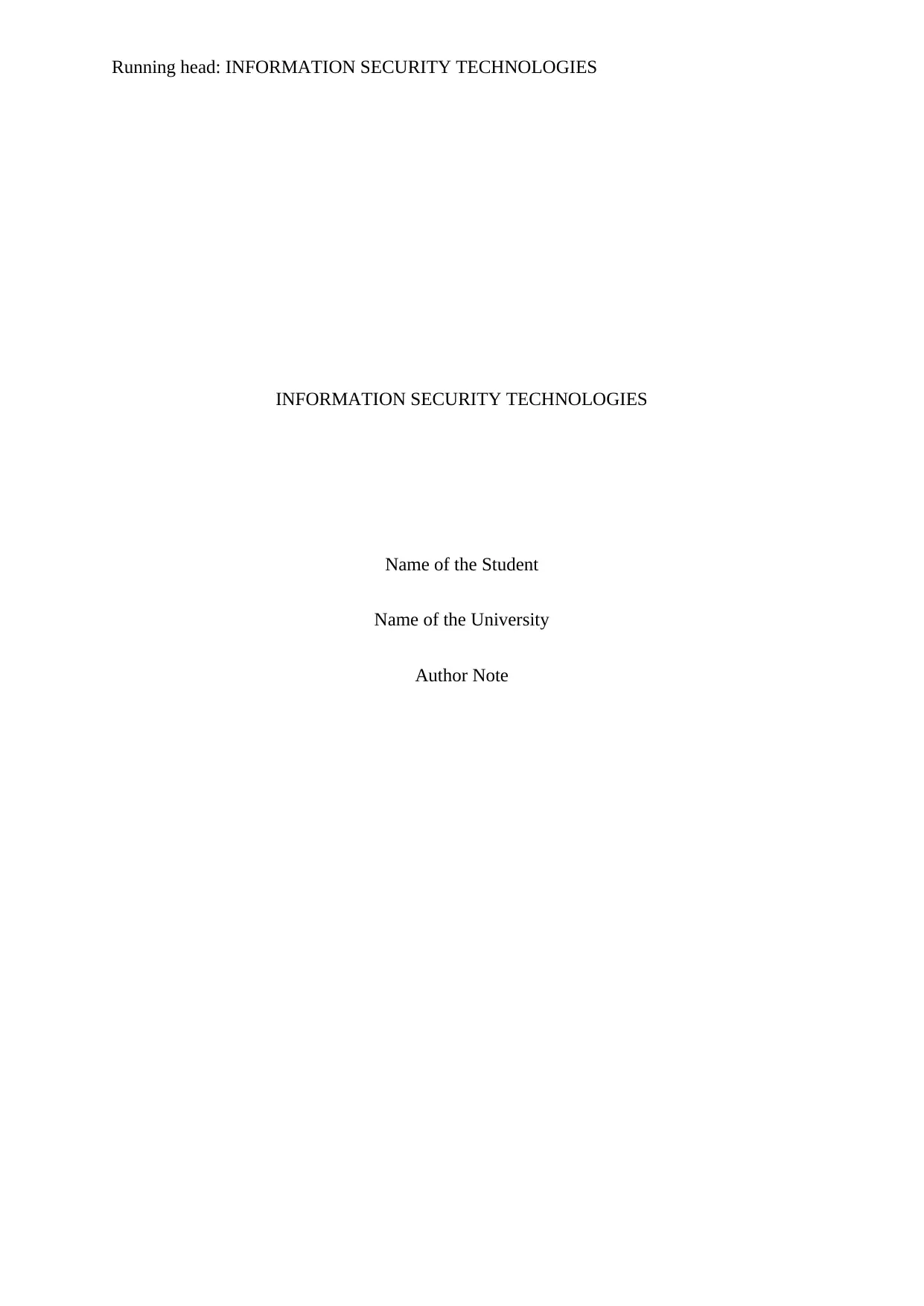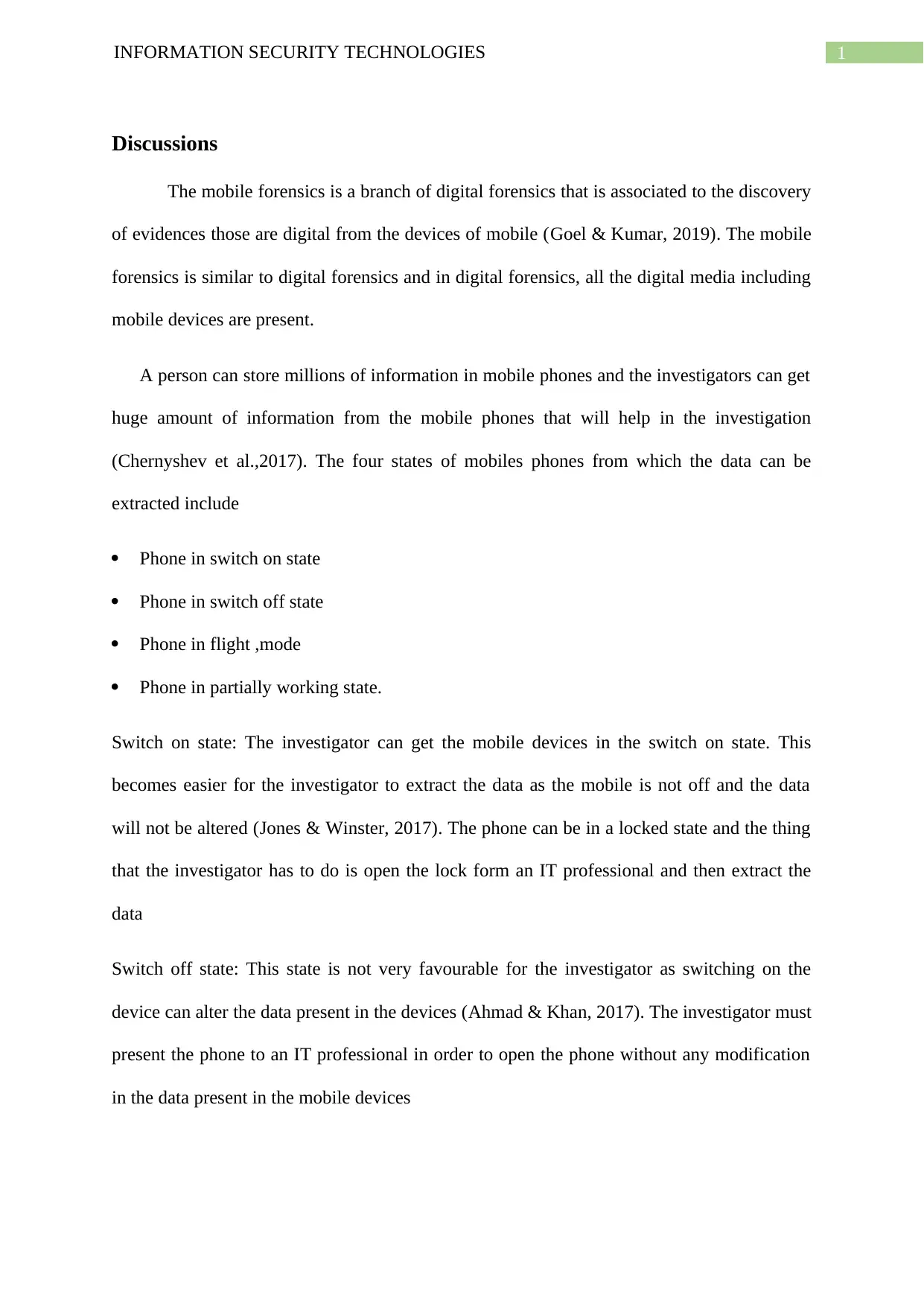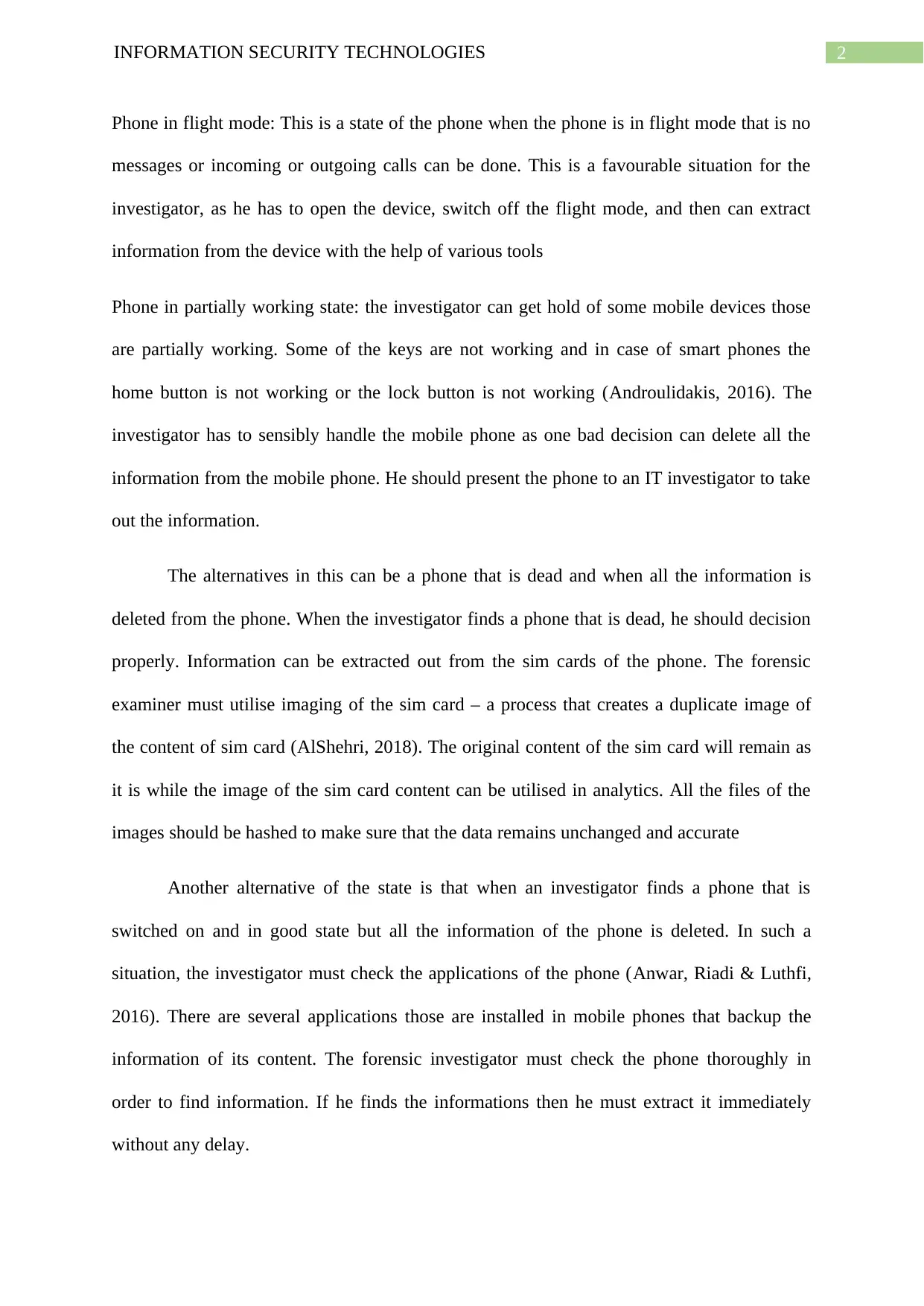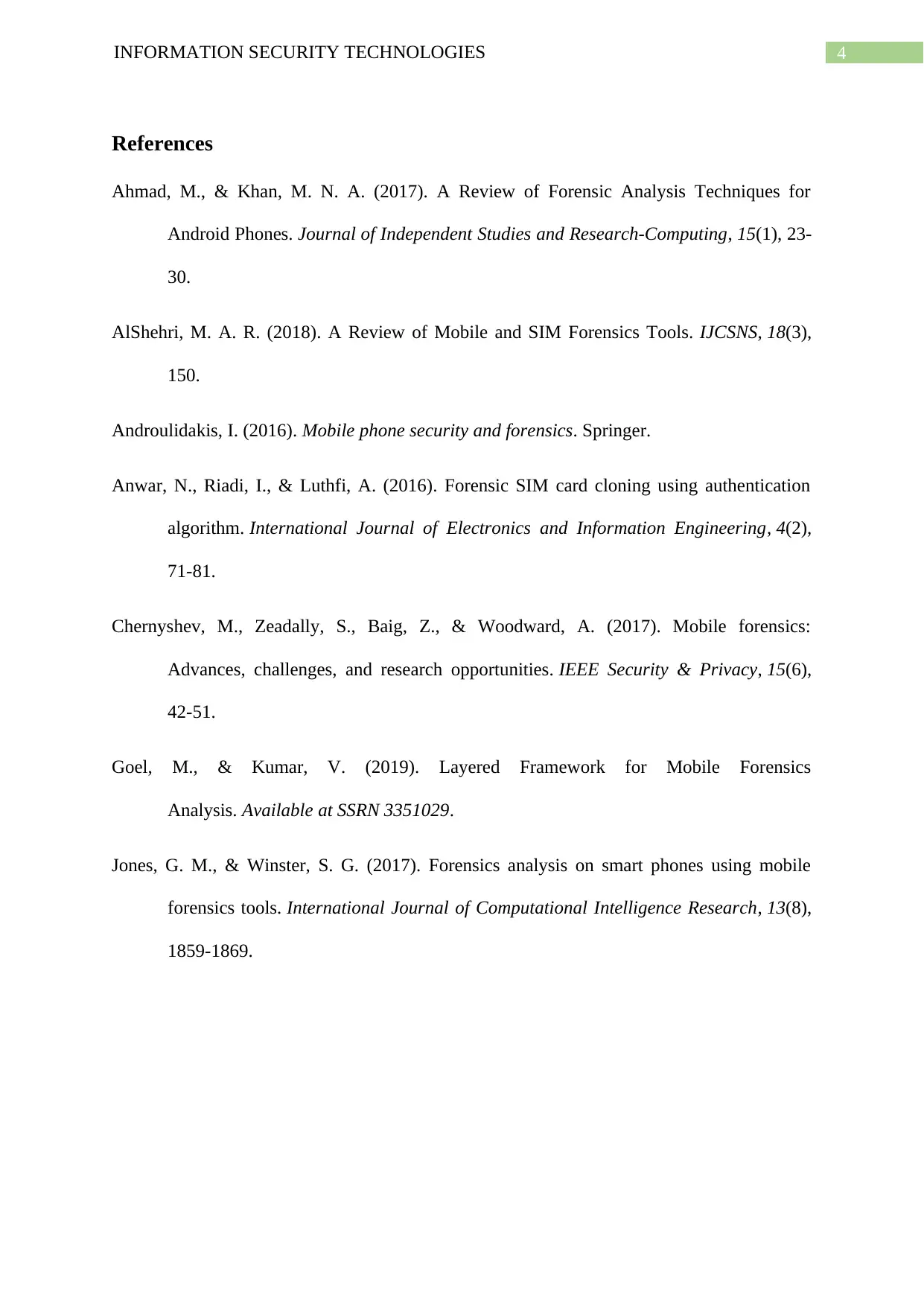Information Security Technologies: Mobile Forensics Discussion Post
VerifiedAdded on 2022/09/01
|5
|904
|29
Discussion Board Post
AI Summary
This discussion post delves into the realm of mobile forensics, focusing on the four states a mobile device can be in during data extraction: switch on, switch off, flight mode, and partially working state. The post describes each state, highlighting its impact on investigators and the challenges it presents. For instance, a switched-on state facilitates easier data extraction, while a switched-off state risks data alteration. The post emphasizes the importance of IT professionals in accessing locked devices or handling potentially data-corrupting situations. It also addresses alternatives like SIM card imaging and application-based data backups. The author references academic sources to support the analysis and adheres to APA guidelines. The post provides a comprehensive overview of mobile forensic techniques, crucial for digital investigations.
1 out of 5











![[object Object]](/_next/static/media/star-bottom.7253800d.svg)